

This online news website is owned and operated by Becky Watts. If you enjoy reading Pike County Times, consider buying an advertisement for your business or sending a donation to support the only free online newspaper in Pike County. Donations can be sent to: The Pike County Times, PO Box 843, Zebulon, Georgia 30295. Click here to donate through PayPal. Thanks for supporting Pike County's only free online newspaper!
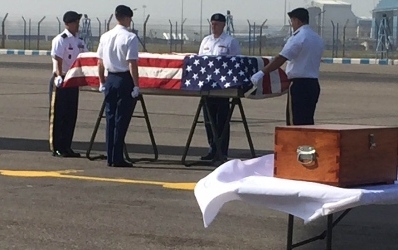
Tara Copp, © 2016 Stars and Stripes, All Rights Reserved
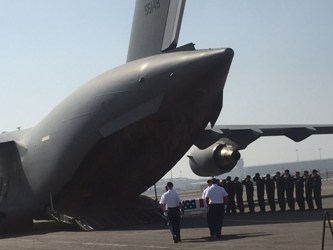
Tara Copp, © 2016 Stars and Stripes, All Rights Reserved
By Editor Becky Watts
CONCORD - No soldier left behind has been a long-time military creed. Families of crew members from the B-24J aircraft “Hot as Hell” have been waiting for 72 years for closure. This includes the family of Lt. Robert "Eugene" Oxford.
“Hot as Hell” was lost during a ferrying mission that departed from Kunming, China on January 25, 1944. It never arrived in Chabua, India. Family members were left to wonder about their loved ones who were classified as Missing in Action, but no further word was heard about their missing loved ones until the “Hot as Hell” crash site was found by Clayton Kuhles of MIA Recoveries and an archeological report was filed on December 7, 2006 showing that the plane had been located near Damroh, India. Click here to read the original articles from 2007 to date on this discovery.
Efforts began to bring these missing soldiers home to their loved ones. The Defense POW/MIA Accounting Agency (DPAA) conducted a recovery mission to India’s Himalayan Mountains in the Arunachal Pradesh region in an attempt to bring home the remains of eight Army Air Corps members who went down with their plane in 1944. The recovery mission was ended prematurely, but two small boxes containing remains from two different crash sites in India were brought back to the United States for identification and shown honor in a repatriation ceremony both in India and Hawaii. Remains from B-24J Liberator known as “Hot as Hell” were recovered in October of 2015.
A repatriation ceremony was held for the remains that had been recovered from these crash sites on April 13, 2016. After the ceremony, the remains were flown by U.S. military aircraft to the DPAA laboratory in Honolulu, Hawaii, for identification.
Tara Copp from Stars and Stripes has covered the story of “Hot as Hell” in the following articles. Click here to read her April 8, 2016 overview article and click here to read the repatriation article complete with pictures from the repatriation ceremony.
Click here to read a U.S. Department of Defense article about the repatriation ceremony.
A Trip to Hawaii
Bill and Merrill Roan flew to Hawaii to be present when the remains that had been recovered in India were brought there for identification. Merrill said that it was a very moving ceremony. “It was mind-blowing as they landed,” she said. “72 years they waited to get back on U.S. soil.”
Merrill said that the three family members walked out holding hands and stayed that way through the ceremony. A family member of the co-pilot of “Hot as Hell” was also present with them. They were escorted by two high ranking military officials, and the family members thanked the Honor Guard after the ceremony. After the ceremony on the tarmac, the family members toured the DPAA laboratory.
Merrill praised those who were a part of the return home for these soldiers and said, “I wouldn’t have missed it for the world.” She still feels like the return home of even one soldier will help bring closure to all of the families of the “Hot as Hell” crew because they’ve grown close in the years that have passed as they waited for their loved ones to be brought home.
What is next?
For the time being, the families continue to wait. Merrill said that the timeline they were given was that identification could be made eight months to a year from that time in April. She said that if Eugene is identified, they plan to go back.
The situation has been tense in India, China, and United States relations for many years, but apparently there is work going on behind the scenes to bring our Missing In Action soldiers home. Tara Copp reported that a World War II crash site survey team will go back to India in her August 29, 2016 article that can be read by clicking here.
Pike County Times has been covering Lt. Robert "Eugene" Oxford’s homecoming since 2007 and will continue to follow through to its conclusion. As the wife of a soldier who came home, I think that we as a country need to make sure that no one is left behind and that all of our military families are given closure--especially those who have given the ultimate sacrifice and have been gone so long.
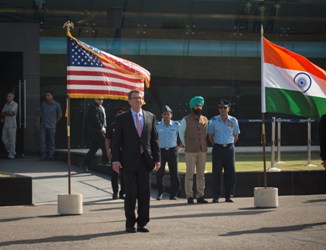
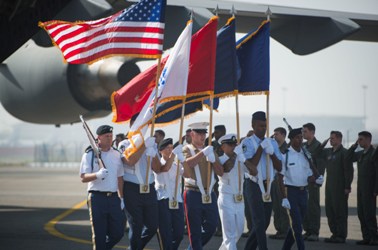
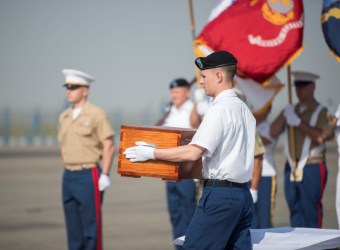
These photos are from the Repatriation Ceremony in India. Photos courtesy of DPAA.
Photos below are of the Honolulu ceremony and are also courtesy of DPAA.
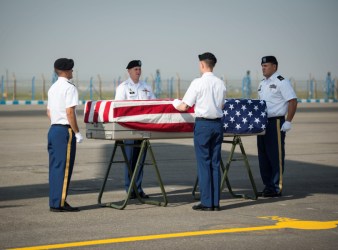

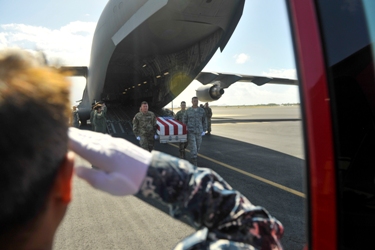
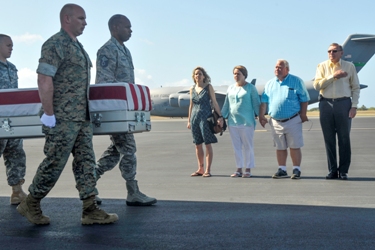
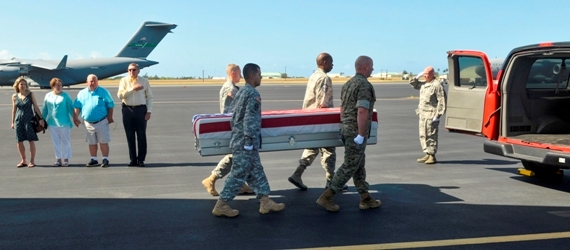
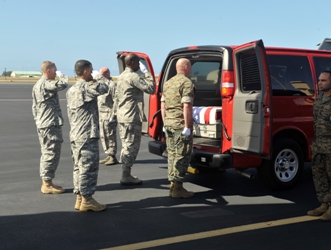
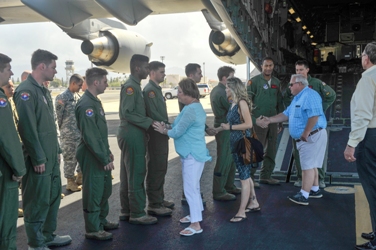
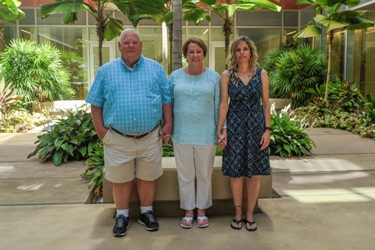
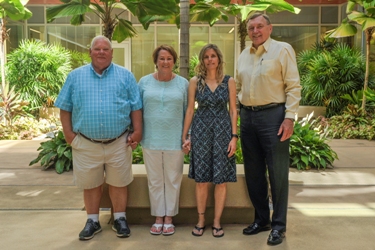

Photo of Lt. Robert "Eugene" Oxford courtesy of Fold3.com

Recovery photos courtesy of DPAA. More photos below article.
By Editor Becky Watts
CONCORD - Seventy two years is a long time to be missing a loved one who served in the service of our country but has not yet been returned home to their family. The family of Lt. Robert Eugene Oxford knows all too well about a wait like this. In fact, the families of eight members of a plane that went down in 1944 have had a long wait, but there is hope that the American government is working to bring their loved ones home.
The Defense POW/MIA Accounting Agency (DPAA) has conducted a recovery mission in India’s Himalayan Mountains in the Arunachal Pradesh region in an effort to bring home eight members of the Army Air Corps who went down in a B-24J aircraft in 1944. Family members all across the United States are keeping an eye on the internet and praying that their loved ones will be brought home soon for their final rest.
Update 12.7.15: Family member, Gary Zaetz notified me of the following: Today I received from Emma Walker of the Army's PCRB office this information: "The Defense POW/MIA Accounting Agency (DPAA) asked that we inform family members that they do not have a date yet on when remains [of the Hot as Hell crew] will reach Hawaii. Our office will let family members know the date as soon as we have that information." Family member, Merrill Roan advised that she got this call today as well.
This does note that the recovery team found the remains for each crew member since parts of the site were not safe for a search and the search had to be ended prematurely for safety reasons that explained in the following series of questions. However, I had a family member tell me that a burial for even one of the crew members would be the beginning of closure for the entire "Hot as Hell" family. Pike County Times will continue to follow this story through to its finale. End of Update
A Note About the Order of These Articles
This article is a continuation of a series of articles that began in 2007. If you have not read about the quest to bring home MIA Lt. Oxford, you may want to start at the beginning of the story that Pike County Times has been covering since 2007. Click here and begin reading at the bottom of the page since the articles are in date order from the bottom with the newest articles at the top of the page.
If you have not read Part 1 of this series, this article will probably make more sense after reading "Part 1: Search and Recovery Efforts May Finally Bring Closure to Family of MIA Lt. Robert "Eugene" Oxford." That article is located directly below this article on the page.
The Rest of the Story
Gary Zaetz, Founder and Chairman at Families and Supporters of America's Arunachal MIA's, has kept in contact with Pike County Times over the years about the crash and the search for closure for the families of those MIA in Arunachal. He let me know that the search had begun, and I sent an email to the Defense POW/MIA Accounting Agency (DPPA) to get some information about the recovery effort. The following is the result of an email interview that I conducted with Maj. Natasha Waggoner, USAF,Deputy, Public Affairs from DPPA. I greatly appreciate Maj. Waggoner's efforts to answer my questions in a timely manner.
Each question is listed with the answer exactly as I received it. Pike County Times will continue to follow up on the efforts to bring closure to families of the eight members of the Army Air Corps who went down in 1944 in the B-24J aircraft nicknamed "Hot as Hell."
QUESTION 1) How was this particular crash site located initially?
ANSWER: On 7 December 2006, while investigating stories of U.S. crash sites in Damroh Village, Arunachal Pradesh Province, India, Mr. Clayton Kuhles, a self-funded MIA searcher discovered B-24J aircraft wreckage at 9,404 ft. Mr. Kuhles reportedly located a wing and a panel with the construction number “2878”. This was researched further by Mr. Matt Poole who discovered that this construction number corresponds with a B-24J serial number 42-73308 with call sign “Hot as Hell” assigned to the 14th Air Force, 308th Bomb Group, 425th Bomb Squadron.
QUESTION 2) What has been the process to date to go from a possible crash site to an expedition to bring home the remains of those located at the scene of the crash?
ANSWER: Typically, DPAA’s process starts with our research analysts looking at archives in the US as well as the host nation (museums; government archives; etc) as well as obtaining the oral histories from host-nation military and governmental officials that may have broad information about a particular region or battle. They can develop 30-40 new leads through these means. Once we have enough information gathered and the case has been approved for field work by DPAA leadership, an investigation team will follow up on the leads by interviewing potential witnesses, conducting on-site reconnaissance, and surveying terrain for safety and logistical concerns. Their goal is to obtain enough information to correlate or connect a particular site with an MIA. Their findings and recommendations determine what will be scheduled for recovery.
In this case, it was in 2008 when the Government of India granted access to our predecessor organization, JPAC, to send in an investigation team and conduct a site survey. The team was able to exclusively correlate the crash site with the aircraft based on the discovery of unique wreckage serial numbers. In 2009, a recovery team was sent to the site to conduct an excavation. However, due to adverse weather conditions, all work was suspended. The Recovery Leader advised that additional excavation work was necessary to excavate the crash site to its fullest potential and the site was not closed. Unfortunately, over the next six years, political issues and security concerns in Arunachal Pradesh prevented JPAC from obtaining approval from the Government of India to continue recovery operations. Finally, in May 2015, the GOI approved our request for continued excavation activities at the crash site.
During this most recent mission, a DPAA team renewed recovery efforts. The team reported the recovery of possible human remains during their efforts. These possible remains will be transported to the DPAA laboratory for further analysis and possible identification. Work on the site was halted on November 3, 2015 due to excavation team safety concerns which could not be mitigated (e.g. rock slides with large boulders).
QUESTION 3) Where does the funding come for this and what kind of funding is available? How much was spent on this particular recovery effort?
ANSWER: DPAA has an annual budget used for funding operations. The cost of missions varies based on the requirements and complexities involved. For this particular mission to India, DPAA budgeted approximately $730,000. However, this mission was cut short due to safety issues and until we receive our final bills from the services rendered, we are unable to provide you with the final cost. I can tell you, though, that it will be less than the budgeted amount above.
QUESTION 4) What agency is doing the testing to find out whether the remains recovered at this crash site are our MIA servicemen? I am assuming that DNA testing will be done and that items around the service members were picked up for examination as well i.e. dogtags, etc. Please advise if there are other procedures that will be done as well.
ANSWER: Upon arrival at the DPAA laboratory, all remains and artifacts recovered from a site are signed over to an evidence coordinator and stored in a secure area. Forensic anthropologists are responsible for the analysis of human remains and material evidence, such as military uniforms, personal affects and identification tags. Scientists use a variety of techniques to establish the identification of unaccounted-for individuals, including analysis of skeletal remains and sampling mitochondrial DNA. They also analyze material evidence, personal effects and life support equipment. The agency medical examiner evaluates these overlapping lines of evidence in an effort to identify the remains.
Dental remains are extremely important to the identification process. An individual’s dental records are often the best way to identify remains as they have unique individual characteristics and may contain surviving mtDNA. Ideally, the agency’s forensic odontologists will have antemortem (before death) X-rays to use for comparison, but even handwritten charts and treatment notes can be critical to the research and identification process.
The lab uses mtDNA in about three-quarters of its cases. Samples taken from bones and teeth are analyzed at the Armed Forces DNA Identification Laboratory, where they extract and amplify the surviving mtDNA to determine the genetic sequence. This sequence is compared with sequences from family reference samples provided by living individuals who are maternally related to the unidentified American. These family reference samples are collected as needed by the casualty and mortuary offices. Generally, all persons of the same maternal line have the same mtDNA sequences. Since these sequences are rare but not unique within the general population, they cannot stand alone as evidence for identification. In addition to the factors previously mentioned, each separate line of evidence must be examined at the lab and correlated with all historical evidence. All reports undergo a thorough peer review process that includes an external review by independent experts.
QUESTION 5) What is an approximate timeline of this testing and what will be required of family members in order to do DNA testing, etc.? If this is the first mission like this, I would like to give readers and even families an idea of the procedure that will be followed for each mission.
ANSWER: In a typical case, the turnaround time on DNA results is about 10 weeks. Once DPAA receives the DNA we can then do a comparison if there is a family reference sample available. If the family member is a maternal relative (maternal mother, maternal aunt, brother, sister [mtDNA testing]), a paternal relative (father, brother, paternal uncle, paternal cousin [Y-STR testing]), or a nuclear relative (father, mother, brother or sister [auSTR testing]) of a missing service member, they are eligible to donate a DNA reference material. Depending on thier relationship to the missing service member they could be a reference for multiple testing methods (mtDNA, auSTR and/or Y-STR). For example, if the father is the missing service member and is survived by his son, his son is an eligible nuclear (auSTR) and paternal (Y-STR) reference.
For more information on DNA please click on the below link to our website: http://www.dpaa.mil/Resources/FactSheets/ArticleView/tabid/10163/Article/590581/dna.aspx. [Note from the Editor: Family member Merrill Roan advised that the Oxford family has already contributed necessary DNA reference material.]
QUESTION 6) At what point/points, will the families be notified of this endeavor?
ANSWER: Typically, the Service Casualty Officer has had contact for years with the primary next of kin on cases that are being worked by agency investigators. When the agency finishes an investigation or an excavation, all of our field work is summarized in an after-action report.
A copy of that report is forwarded to the SCO, which gives it to the family. The Department of Defense works hard to keep family members fully informed, and let them know what the next steps might be with regards to their particular case, even if it's months or years ahead.
QUESTION 7) What will be the process after identification to return the service members' remains to their families for burial if there is confirmation of identity?
ANSWER: Once we have an ID, we notify the appropriate service's Casualty Assistance Office. These offices are responsible for notifying the family and making logistics and burial arrangements.
QUESTION 8) What goes into a search and recovery effort? Normal number of team members, permission from country, do people volunteer or is this their normal jobs, etc.
ANSWER: The agency holds technical, or consultative, talks with many different countries in a typical year. Generally, we present our requested schedule of investigations and operations in a given host country. We may show them which specific cases we're working on, and why it's important that we visit a certain area at a certain time of the year. We talk about logistics and how we plan to move our teams in-country, and the kind of support we would need from them at the national, provincial, or local levels.
The agency deploys investigative teams (IT) consisting of four to nine members with specialized skills (team leader, analysts, linguist, medic, and sometimes anthropologists) to conduct field research of cases. Their goal is to obtain enough information to correlate or connect a particular site with an MIA. Their findings and recommendations determine what will be scheduled for recovery.
We have 23 recovery teams (RT) including one underwater and one mountaineering team and will increase each year until 2015. Each team consists of 10-14 people comprised of a forensic anthropologist, team leader and sergeant, linguist, medic, life support technician, communications technician, forensic photographer, explosive ordnance disposal technician, and mortuary affairs specialists. Recovery teams use standard field archaeology methods in the excavation as directed by the on-site anthropologist.
QUESTION 9) Is this the first recovery effort or is the first successful recovery effort?
ANSWER: In this case, this is the first recovery which has yielded evidence for analysis. Until the lab has completed evaluating the evidence we can’t say definitively if this was a “success”. As to this being the first recovery mission since 2009, we were not granted access to Arunachal Pradesh until this year due to security concerns in the region.
QUESTION 10) How many confirmed Arunachal crash sites are there at this time? How many unconfirmed site are there? And how is the American government working to bring home all of our Arunachal MIA's?
ANSWER: Arunachal Pradesh is a remote and rugged region of NE India. We currently track loss incident vicinities in excess of 14K feet elevation. Based on a review of historical loss records and additional source data, DPAA Analysts currently track approximately 49 loss incidents in Arunachal Pradesh with approximately 108 bodies not recovered (BNR) associated. Seventeen of these 49 incidents have no BNR associated, but their loss locations are important to track/record for correlation with new lead information. The 32 cases with BNR are currently undergoing further review and analysis.
Following WWII hostilities, search and recovery efforts in this region were performed by the US Government. These teams faced incredible challenges that have only been compounded by the passage of 70 years.
QUESTION 11) Does the American government have written confirmation from the Indian government that it is going to allow recovery efforts like this to continue?
ANSWER: The GOI continues to be supportive of DPAA’s investigation and recovery efforts, but can’t predict future security concerns that may impact our operations.
QUESTION 12) Some family members are asking for a pledge from the Indian government to permit the recovery of all documented Arunachal crash sites by the end of 2018. Is this feasible or does our government have any written documentation on this?
ANSWER: Given the large number of loss incidents and sites along with the logistical challenges involved with the sites in this region, it would be unrealistic to expect to be able to recover all sites by the end of 2018. Our current operations plan calls for one to two missions in India per year.
QUESTION 13) Would it be possible to get a copy of the September 28, 2015 announcement from the US Embassy in India on this recovery project?
ANSWER: Yes, the press release is located at this site: http://newdelhi.usembassy.gov/pr092815.html.
Closing
So far this year, there have been repatriation ceremonies in Vietnam and Malaysia for the remains of our Missing in Action soldiers who are finally coming home to their familes. Click here to watch an Associated Press YouTube video with U.S. Secretary of State Madeleine Albright in attendance. Click here to see an Associated Press YouTube video of US Secretary of State Hillary Rodham Clinton in Vietnam in attendance. Click here to see a series of photos of a repatriation ceremony in Malaysia with U.S. Defense Secretary Ash Carter stands with Malaysian Deputy Defense Minister Mohd Johari Baharum in attendance.
There has not been a repatriation ceremony in India, but hopefully, "Hot as Hell" family members (and other families who have lost loved ones) will see one and know that their loved ones could be coming home soon too.
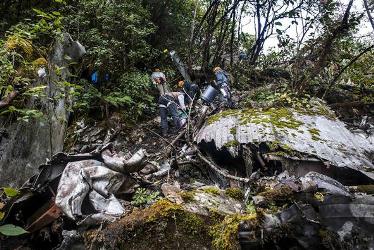
Recovery photos courtesy of DPAA
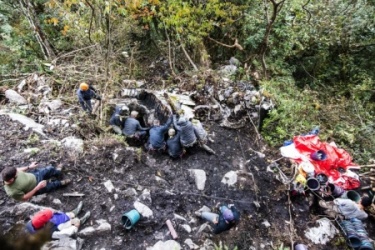
Recovery photos courtesy of DPAA
By Editor Becky Watts
CONCORD - Seventy two years is a long time to be missing a loved one who served in the service of our country but has not yet been returned home to their family. The family of Lt. Robert Eugene Oxford knows all too well about a wait like this. In fact, the families of eight members of a plane that went down in 1944 have had a long wait, but there is hope that the American government is working to bring their loved ones home.
The Defense POW/MIS Accounting Agency (DPAA) has conducted a recovery mission in India’s Himalayan Mountains in the Arunachal Pradesh region in an effort to bring home eight members of the Army Air Corps who went down in a B-24J aircraft in 1944. Family members all across the United States are keeping an eye on the internet and praying that their loved ones will be brought home soon for their final rest.
That Fatal Day
It happened on a routine ferrying mission that departed from Kunming, China. The B-24J Liberator named "Hot as Hell" flew in the China, India, and Burma Theatre during World War II. On January 25, 1944, this aircraft from the 14th Air Force, 308th Bomb Group, 425th Bomb Squadron never arrived at its destination in Chabua, India.
The eight crewmen aboard "Hot as Hell" were officially listed as Missing in Action (MIA) in a report dated November 20, 1944, advised that the plane was "still listed as MIA". A Bombardier named 1st Lt. Robert E. Oxford--affectionately known as Eugene--was one of the missing. Back home, his family worried about him. They wondered exactly what had happened and when he was coming home.
I interviewed Eugene's older brother, Fred, in 2007. He told me that survivors of plane crashes sometimes walk out of the jungle months later, but that wasn’t the case for this crew. The crew of "Hot as Hell" was declared MIA shortly after the crash and the crew members on the flight were declared dead after 2 years. Their bodies were not recovered and brought home to their families at the end of the war.
To read the rest of this article entitled, “Family of Missing Airman Asks for Public's Help to Bring Him Home,” click here.
Discovery of the Plane
“Hot as Hell” is the first plane crash site identified in Arunachal Pradesh in 2006. It was identified by Arizona adventurer Clayton Kuhles who documented this finding, posted information on his MIA Recoveries website, and notified the American government of his findings. He filed an archeological site report form with the Joint Prisoner of War/Missing in Action (POW/MIA) Accounting Command on December 7, 2006 showing that the plane had been located near Damroh, India.
Eugene’s family did not know what had happened to him until a family member came across a September 3, 2007, a message that was posted on a Genealogy website asking if anyone was familiar with the family of 1st Lt. Robert E. Oxford of Pike County, Georgia. The post was from a relative of one of the other crew members from "Hot as Hell." It went on to say that the wreckage of the plane had been discovered in a remote area in northeastern India and that their family was trying to contact relatives of missing crewmen in order to persuade the Department of Defense to send a recovery team to the site of the wreckage.
Clayton Kuhles’ guide had found the wreckage for "Hot as Hell" a couple of years prior to the trip to the area to document American crashes in 2006. A parachute and an oxygen bottle were found at the site as well as bones that were likely human remains. The markings on the plane identify it as "Hot as Hell." Pictures can be seen on the MIA Recoveries website.
Merrill Roan, wife of Eugene’s nephew Bill Roan, is the genealogist of the family and found the post. “It took the family a while to believe that the post was true,” she said. Less than one week after the posting of this message, Eugene's family was finally learning what had happened to him during his tour of duty in the military after (at that time) 63 years of waiting and wondering. Merrill said that she and her mother in law talked about Eugene many times and that she took her last breath not knowing where he was and that hurt.
Through Clayton's work to document the wreckage of WWII planes, families have joined together in a growing effort to bring home their loved ones who have been missing in action since the war. This effort finally came to fruition when DPAA sent teams into India and to Vietnam to locate and bring back the remains of service members.
A Trip to India
A thirteen member DPAA team along with an experienced local trekking team began the mission to recover the remains of American Army Air Corps members on October 2, 2015. The excavation took place on a site more than 10,000 feet up the mountain and ended thirty five days later.
A press release from the Embassy in New Delhi, India from September 28, 2015 advised that a team from DPAA arrived in India on September 27, 2015 for the first recovery mission conducted since 2009. This press release states that approximately 400 Americans are still missing in India and that there are more than 83,000 missing Americans from past wars and conflicts. Click here to read more.
Cindy Barks, a reporter for The Daily Courier in Arizona, quoted Kristen Duus, a public affairs non-commissioned officer with DPAA, who advised her on October 30, 2015 that “the recovery effort at the "Hot as Hell" wreckage site was ‘going well and is still ongoing.’” Ms. Duus advised that the families have not been contacted at this time and will not be until identification process is complete. Click here to read this article.
The DPAA article from November 18, 2015 quoted anthropologist Dr. Meghan-Tomisita Cosgriff-Hernandez discussing the search: "It really was an incredible experience and an unforgettable success being able to bring back remains and other evidence which hopefully will be identified as belonging to one or more of our unaccounted-for service members from WWII." Click here to read this article and see more pictures.
Click here to see pictures from the “Hot as Hell” recovery effort. click here to see video from this recovery effort.
Arunachal Pradesh is an area that holds the remains of many of our missing service members because it was the main air supply route from India to China during World War II. The Himalaya Mountains are a part of this service route and helped give it a nickname of “The Hump.” Flyers battled bad weather as they flew this route and brought supplies to China as it fought in the war against Japan.
Arunachal Pradesh is located in northeast India. This region has been involved in a long-running dispute between India and China. According to an Economic Times article that speaks specifically about the Hot As Hell crash and recovery of these airmen, China has claimed the territory of Arunachal Pradesh and the Chinese government’s objections to allowing United States military teams into this region is a large part of the reason that recovery operations were halted in 2009. Click here to read more from the September 2015 article of Economic Times.
Other Recovery Efforts
This is not the first trip into this area of the world for an identification and recovery team. A repatriation ceremony was held on November 5, 2015 in Malaysia to honor members of a recovered World War II air crew on November 5, 2015. Click here to read more.
A DPAA recovery team has been working in an excavation operation in Dien Bien province, Vietnam since November 17, 2015 to find two crew members of an F-4C aircraft lost during the Vietnam War. The DPAA’s Facebook page has more information on their efforts to bring home MIA at www.facebook.com/dodpaa. According to the Facebook page, the DPAA deploys teams from its operational office based at Joint Base Pearl Harbor-Hickam in Hawaii.
What Happens Next?
Family members have not been notified about this mission at this point because the identification process has not been completed. USAF Major Natasha Waggoner, Deputy, Public Affairs for the Defense POW/MIA Accounting Agency (DPPA), advised Pike County Times by email that the team has returned from the mission and are working to analyze the remains of those who have been brought back to the United States. However, she advised that DPPA will not be able to talk specifically about this case until analysis is complete.
Pike County Times will follow up with another article when further information is provided. Look for more articles until the families of these MIA have been provided with closure and their loved ones are brought home.
Closing
According to a post from November 27, 2015, a search in Vietnam for an F-4C aircraft has resulted in the return and identification of Sergeant First Class Billy D. Hill who has been MIA since 1968. The DPAA Lab identified his remains on September 4, 2015, and he will be laid to rest in Texas on December 17, 2015.
The Northeast Today in India advised in a November 29, 2015 article that the World War II Crash Site in Arunachal resulted in the recovery team finding and recovering “live ammunitions, a 50 caliber gun (damaged) and few human remains including tooth and skull.” Click here to read this article.
Merrill said that a recovery of the remains of even one of those on the plane would help bring closure to all of the family members of those who lost loved ones that day. “All of us are family now,” she said. She asked that DPAA make every effort to uncover all that they can.
Hopefully, the wait will not be much longer for family members of the “Hot as Hell” crew. Eugene’s brother, Fred Oxford, who spoke to me in 2007, passed away in 2011. Eugene’s parents and his brothers, Henry and Paul and his sister, Kate Roan, have also passed away. Eugene’s family has asked for their loved one to be brought home to rest in Concord at Magnolia Cemetery where his marker stands. Though Fred has passed on, Merrill said that at least he was able to know what happened to Eugene.
Lt. Robert Eugene Oxford has been honored here in Pike County by American Legion Pike Post 197. A POW/MIA Remembrance Ceremony was held in honor First Lieutenant Eugene Oxford, and they continue to honor him with a table set for one and an empty chair draped with a POW/MIA flag at every Pike Post event until the time comes that he is finally returned to his family for burial in the Magnolia Cemetery in Concord.
Special thanks to Gary Zaetz, Founder and Chairman at Families and Supporters of America's Arunachal MIA's, for keeping in contact with Pike County Times over the years about the crash and the search for closure for the families of those MIA in Arunachal. Closure for the family of Lt. Oxford will also help with closure for Gary and his family since he had a family member on "Hot as Hell" too.
More Information
Click here to read more about Lt. Eugene Oxford including articles that go back to 2007 when family here in Pike County first learned that his plane had been found.
Pike County Times also interviewed Eugene’s brother, Fred, in 2007. Click here to read his life story and find out about Concord in the 1920’s and 1930’s.
[Editor's Note: This article was edited on 12.4.15 to note that there was been only one trip into India to conduct recovery efforts. There have also been recovery efforts in Malaysia and Vietnam.]